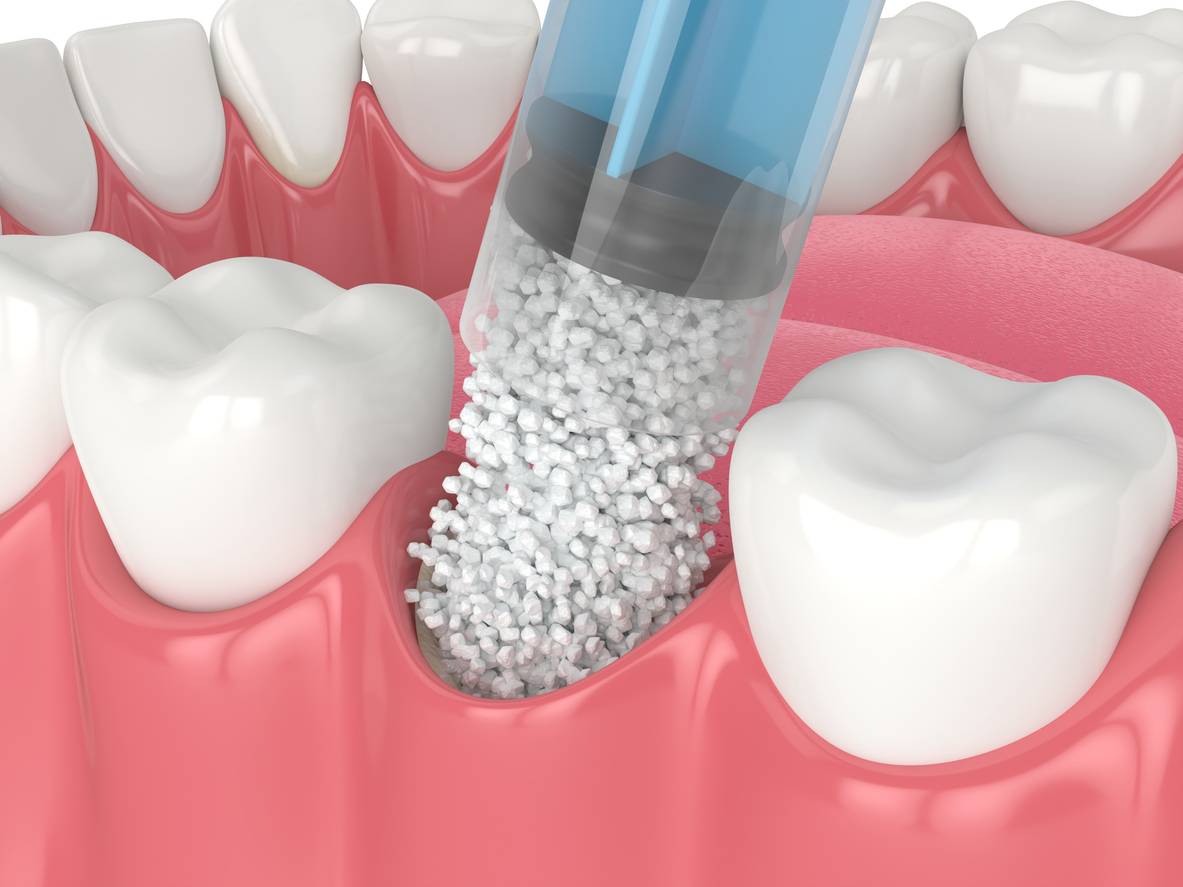Dental bone augmentation, also called bone grafting, is a routine procedure in modern dentistry that restores patients’ jaw bone density. This treatment is often done in preparation for other restorative procedures such as dental implants or as part of gum disease treatment. In this article, we will list the signs you need bone grafting and what the procedure looks like.
What Is Bone Grafting?
Dental bone grafting is a surgical procedure that adds volume and density to the jawbone. The bone graft material is placed in the jawbone where bone density loss has occurred. Then, the body starts regenerating and growing new bone tissue around the graft.
This procedure works because bone tissue can regrow if given the space to do so. In most cases, natural bone replaces the grafting material entirely over time.
Dental graft material can be synthetic or organic. Organic materials can be taken from your own body or a human tissue bank.
Why Consider Bone Grafting?
The most common situations that might require bone grafting include:
- In preparation for dental implants
- Dental implant metal posts are surgically placed directly into the jawbone and later fuse with it. For the procedure to be successful, there has to be enough bone density and volume to support the metal post and provide the necessary stability for the implant. If patients do not have enough bone density, they need bone grafting before the dentist can place dental implants.
- In preparation for implant-supported dentures
- To ensure better retention of traditional dentures if a lot of bone loss occurs
- As a part of gum disease treatment
- Bone grafting can help repair bone damaged by gum disease and prevent tooth loss.
- To preserve the bone after a tooth extraction
Signs You Need Bone Grafting
After a thorough examination, X-rays, and scans, your dentist can determine if dental bone augmentation is the correct procedure for you. Below are several signs that might indicate you need bone grafting.
- You have been missing one or several teeth for a long time. In this case, a process called bone resorption, or loss of bone density, occurs. When the roots of the tooth no longer stimulate the bone, the body stops sending nutrition to the bone. In the first year after a tooth extraction or a tooth loss, a patient can lose up to 20% of the bone density. If you plan to get dental implants, this can be a significant obstacle, and your dentist will most likely recommend bone grafting.
- You have a history of gum disease. Untreated periodontal disease that progresses to more severe stages can spread to the jawbone and provoke bone loss tissue because of infection. If this happens, the infection has to be treated first, and then dental bone augmentation can be used to restore the bone.
- You suffered from an oral trauma or an injury to the jaw. If the jaw bone tissue has been damaged or the jaw has been broken, your dentist might choose bone grafting to repair the bone and boost healing.
- You have a medical condition that negatively affects the bones. Some systemic illnesses can decrease the density of the bones in the whole body, including the jaw. Your doctors may choose bone grafting if it can provide positive results.
- In some cases, you might need bone grafting after a tooth extraction. The decision depends on the location of the extraction, the condition of the underlying bone, and the plans for future treatments. If you are going to get dental implants, your dentist might recommend bone grafting to ensure that bone density loss does not occur while you are healing after tooth extraction.
Is Bone Grafting Painful?
The procedure of bone grafting is typically done using local anesthetic, so most patients do not feel any pain at all. Once the anesthetic wears off, you might start experiencing some pain, swelling, and facial bruises. In some cases, bruising is intense, but the pain is typically manageable with over-the-counter painkillers and goes away in several days. Your dentist will also prescribe a course of antibiotics to prevent infection.
Make an Appointment Today
Improving the condition of your jawbone is possible at OC Dental Specialist. Therefore, if you need a consultation, do not hesitate to make an appointment with a dentist at our office today. We provide top-quality bone grafting services, will carefully examine your case, and offer you the best treatment option. We look forward to welcoming you to our office!

